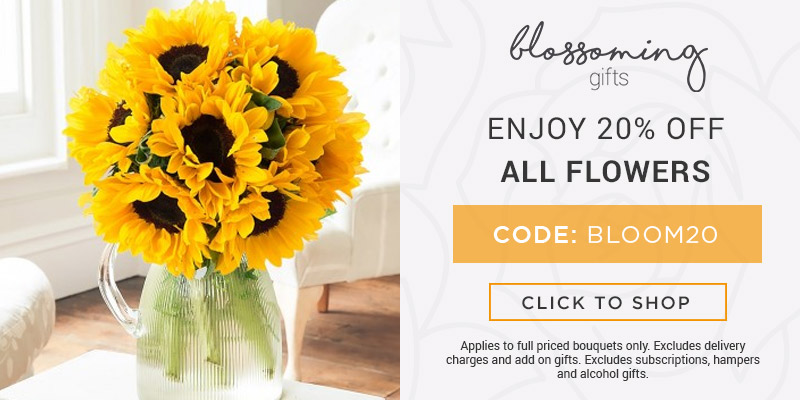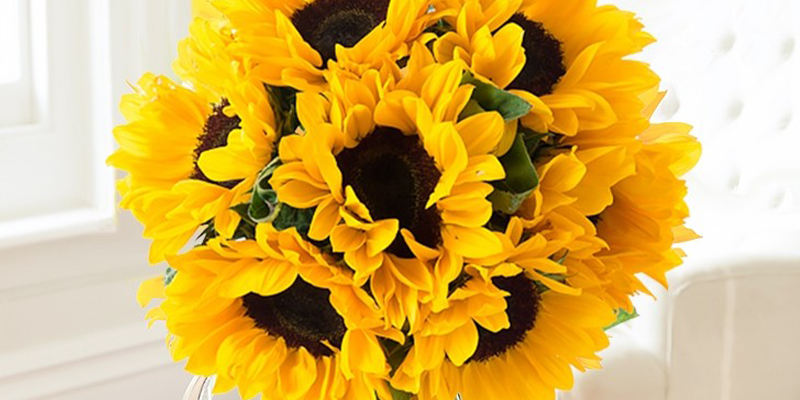Is there anything more summery than sunflowers? Find out more about these bright and beautiful blooms!
Keep reading to discover our 7 most intriguing facts about sunflowers.
Sunflowers track the sun
Just like their name suggests, sunflowers track the sun. The vibrant flower displays a behaviour called ‘heliotropism,’ which means that the flower head can turn to face the sun. In the morning, young flowers will face east and follow the sun throughout the day as the earth moves. Cool huh?
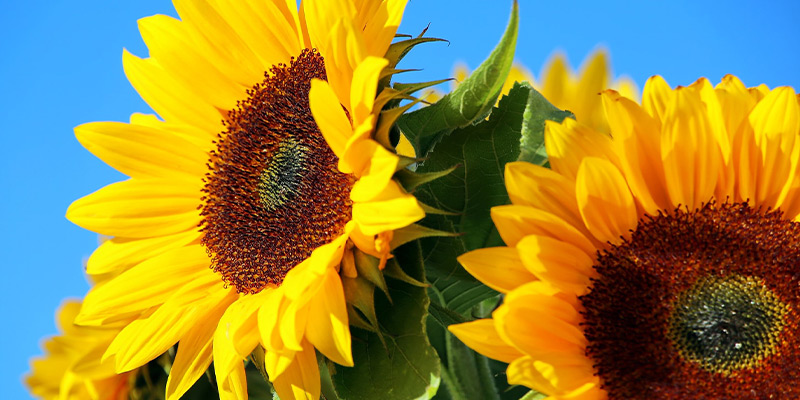
They are actually made up of thousands of tiny flowers
Did you know that the head of each sunflower is made of smaller flowers? The yellow petals we see around the outside are called ray florets and in the middle are the disc florets (where the seeds develop). A single flower can have up to two thousand disc florets!
Sunflowers are native to America
Sunflowers are native to America, just like potatoes, tomatoes and corn. The entire plant is edible, and sunflowers were were cultivated in North America as far back as 3000 BCE. The seeds were ground down to create flour, and like today, the oil was used in cooking. The flowers were also used to make dyes and paints, and dried stalks were sometimes used as a building material too.
They were eventually exported to the rest of the world by Spanish conquistadors around 1500.
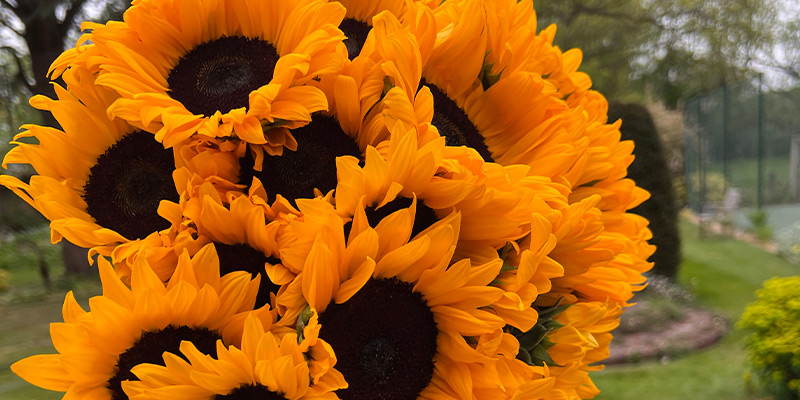
Sunflowers have been grown in space
Sunflowers have been to space! In 2012, US astronaut Don Pettit brought a few companions to the International Space Station… sunflower seeds (along with broccoli and courgette seeds too)! The sunflower grew and even bloomed, although the zero gravity meant that the stem was much more spindly and warped than usual.
Check out his blog and read his gardening process.
The health benefits of sunflowers
Not only are sunflowers incredibly beautiful to look at, their seeds have some amazing health benefits. They prevent cellular damage, improve digestion, increase energy levels, strengthen bones and muscles, and even improve brain health! Next time you take a trip to your local supermarket, pick up some sunflower seeds for a delicious, healthy snack.
Bees love sunflowers
Bees can’t get enough of sunflowers. The central florets are a veritable treasure trove of nectar and pollen. The outer ray petals also serve a purpose, as they help to catch the bees’ attention. Birds and other insects are big fans too!
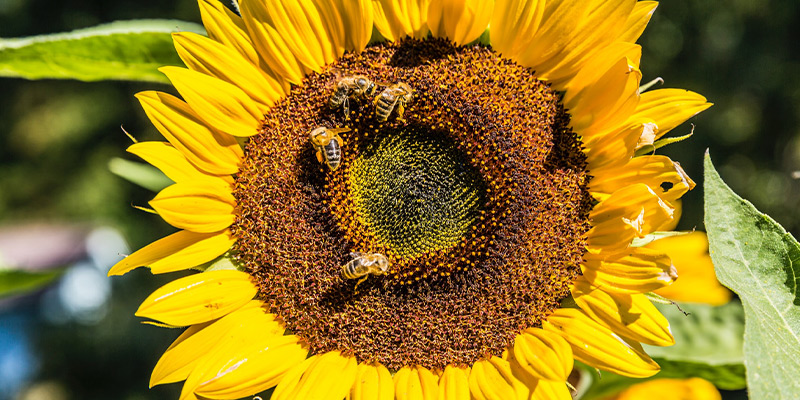
Sunflowers are ‘hyperaccumulators’
Sunflowers are hyperaccumulators, which means they’re really good at absorbing toxic and radioactive metals from soil and groundwater. After the Chernobyl disaster, millions of sunflowers were planted to help the environment recover. They’ve also been to clean up other toxic sites, including land contaminated by lead.
